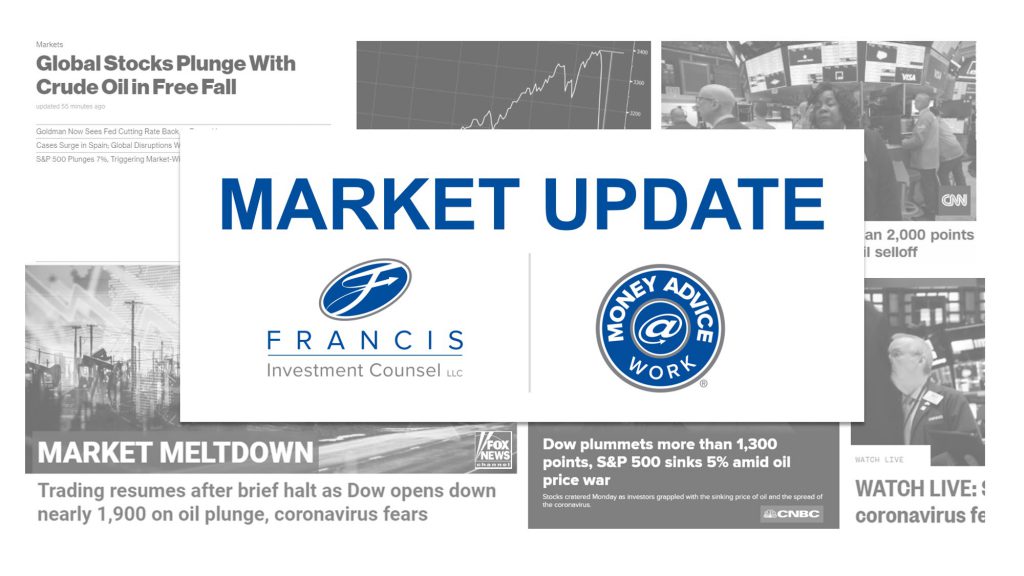
Market Update for February 24, 2022
Russia Ukraine Crisis Update and Repercussions for the Capital Markets
State of the State: Russia Invades Ukraine
Eight years following Russia’s seizure of the Crimean Peninsula, the Russian military has once again invaded Ukraine. Well over 150,000 heavily armed Russian troops, accompanied by aircraft and missiles, have been ordered by Vladimir Putin to “de-militarize” Ukraine. Known as the ‘bread basket of Europe’ for its agricultural significance, Ukraine is also rich in natural resources and possesses some of the most important natural gas pipelines on the planet that send significant amounts of energy into Eastern and Western Europe. The fear of energy supply chain disruption has caused volatility in crude oil and natural gas markets.
At present, the response from the Western governments has largely been focused on seeking diplomacy and enacting an increasing number of sanctions on Russia in an attempt to force an end to the invasion. How this most recent spat between the West and Russia resolves itself is highly uncertain.
Key Areas for Monitoring the Crisis*
- The Ukrainian sovereign debt market – the yield on some Ukrainian bonds maturing this upcoming September has breached 50% while others maturing 10+ years are at yields of over 35%.
- Energy markets, oil and natural gas – European energy prices have soared in recent weeks with Brent Crude oil moving to over $100/bbl while natural gas in Europe is trading higher by over 100% in 2022. The Credit Suisse Commodity Index, a broad basket of commodities, is also up 21% this year.
- U.S. interest rates and the U.S. dollar – the yield on the ten-year Treasury has fallen below 2.00%, now at 1.95%. Although the Fed is expected to raise short-term rates at its March meeting, expectations are for a 25 bps hike versus 50 bps a few weeks prior. The dollar has strengthened to levels last seen in the summer of 2020.
- Equity markets – The S&P 500 Index has now fallen into correction territory in 2022 (-12%) while both European and emerging market equities are approaching correction territory (-6%, -7% respectively).
Implications of the Data
- Likely regime change in Ukraine – Capital markets signal a prompt Russian victory, one that threatens the current Ukrainian government’s existence. Despite Putin’s stated intentions of not seeking Ukrainian occupation, the market has priced otherwise.
- Economic slowdown in Europe and to a lesser extent elsewhere – Europe is essentially held hostage to Russia’s dominant position in the energy markets, particularly natural gas. Substantial price increases equate to slower economic growth via reduced consumer spending. Though the global economy is far from experiencing ‘stagflation,’ an environment of rising commodity prices and slower economic growth is nevertheless a step in that direction.
- Investors seeking safety but not panicking – Overall, we see the marginal decline in long-term Treasury rates as well as the incremental strengthening of the U.S. dollar indicative of “risk-off” sentiment for sure, but the magnitude of the changes suggests a short-term issue which hopefully can be quickly and peacefully resolved.
Key Takeaways for Investors
- No need to become tactically defensive – The geopolitical crisis between Russia and Ukraine should not serve as a catalyst for long-term investors to become more defensive.
- Central banks ready to support global liquidity as needed – While central banks around the globe started 2022 with intentions to gradually tighten financial conditions in response to rising inflationary pressures, we believe they are now likely to delay further tightening and if necessary, inject liquidity into the markets as needed. Keep in mind there remains enormous liquidity from the actions taken in 2020 and 2021 to support economic output.
- Corporate fundamentals are intact – Earnings results are broadly quite encouraging with the vast majority of the companies in the S&P 500 beating consensus expectations indicating the economic momentum is robust.
- What’s actionable? For investors with a longer-term time horizon, recent market declines underscore the importance of proper diversification. The proper mix of stocks, bonds, and real assets (commodities, real estate) is a wise long-term strategy. During times of large market dislocation, it’s worth considering rebalancing your holdings which in most portfolios would result in slight decreases in bond holdings and correspondingly small increases to risk assets like domestic, international developed, and emerging market equities.
*Source data: Bloomberg. Any reference to yields, returns, and other market data is as of 2/24/22. Ukrainian bonds referenced mature in September 2022 and March 2033. The dollar is measured via the DXY as the proxy, a basket of developed market currencies versus the dollar. The summary/prices/quotes/statistics contained herein have been obtained from sources believed reliable but are not necessarily complete and cannot be guaranteed. Past performance results are not necessarily indicative of future results.


